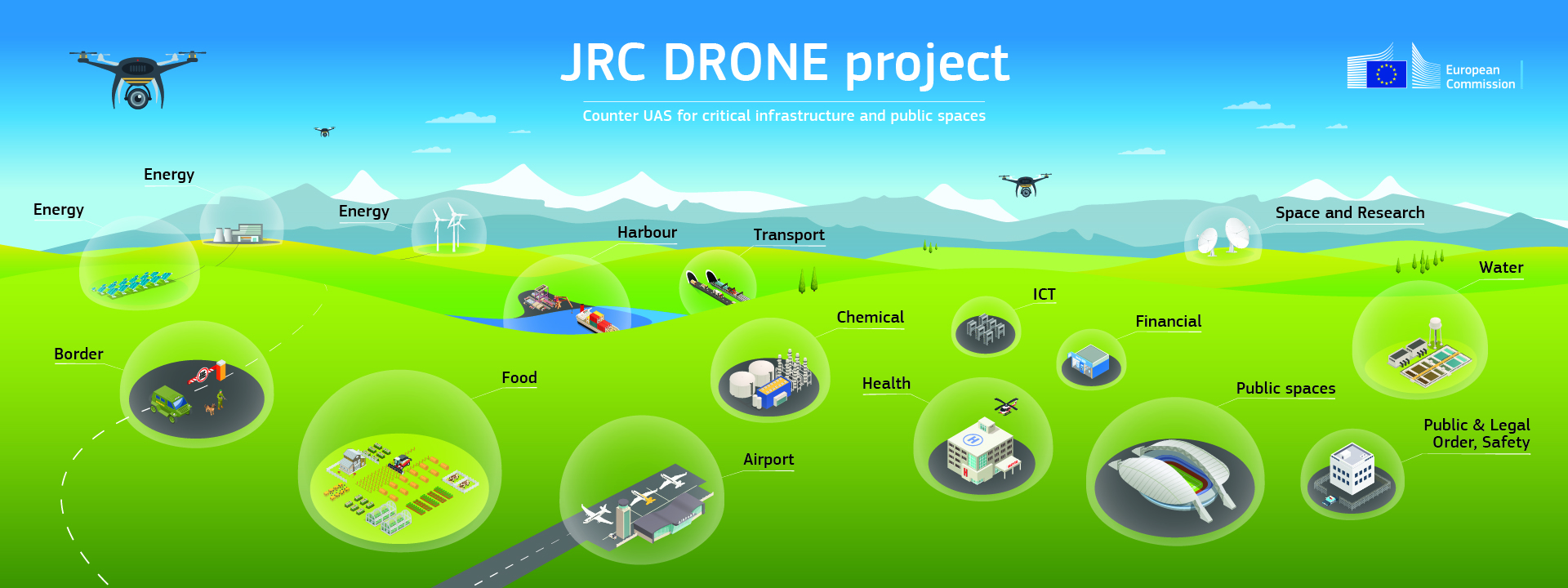JRC DRONE Project to Counter UAS for CI

date: 02/07/2022
See also: More info
The application of Unmanned Aircraft Systems (UAS) is becoming very popular in many areas and UAS services are maturing in parallel with implementation of the new UAS regulations. In Europe common services have been defined to increase UAS use in agriculture, transport, survey, surveillance etc. These, U-SPACE services, harmonises the European UAS market and should increase applications, developments and services linked to UAS.
While UASs has a very large potential for commercial applications there is also potential for misuse. UAS can be used to breach privacy rules, for espionage by using camera technologies, to hijack telecommunication signals and in combination with biological or chemicals agents, explosives or other weapons they can harm persons, disrupt services and damage infrastructure. UAS and components are available on the market off the self, which could be modified for a specific malicious purpose. There is therefore a need for counter measures to control non-collaborative or malicious use of UAS.
Although the majority of non-collaborative use of UAS would probably fall into the category non-intentional (careless or clueless), it is not to be excluded that criminals and terrorists would increasingly make use of them. Across the globe, UAS have already been used in terrorist attacks. The modus operandi as well as the targets of UAS events are so different that countermeasures include active and passive elements. There is currently no common approach to counter UAS.
The project will review processes and interactions between stakeholders and the use technologies (active and passive) and how these technologies can be combined into solutions, which can be used to ensure the security of citizens and critical infrastructure.
The creation of a living lab with a c-UAS solution implemented will be open to stakeholders to investigate counter UAS solution aspects and how these can be applied in real. The living lab implementation will be designed that it can be used as a guide to comply with the legally required Geel site protection (Class 1 Nuclear installation).
Scope of the implementation include: Airspace management around the CI and Integration with UTM/ATM, negotiations with authorities, law enforcement, processes and agreements between stakeholders, investigation of technologies and combinations of these, potential side effect of the selected solution.
The project will investigate how AI can be utilised to improve the overall performance of a counter UAS solution. This could be with AI use in analysis of detector signal and by taking better and faster decision using AI.
The methodology and the experience will be documented in a best practice handbook that can be used for stakeholders that have similar requirements.
It will cover risks, design, planning, preparation and implementation of a solution considering detection, identification and neutralisations. Especially it will investigate the involvement and processes between stakeholders.
